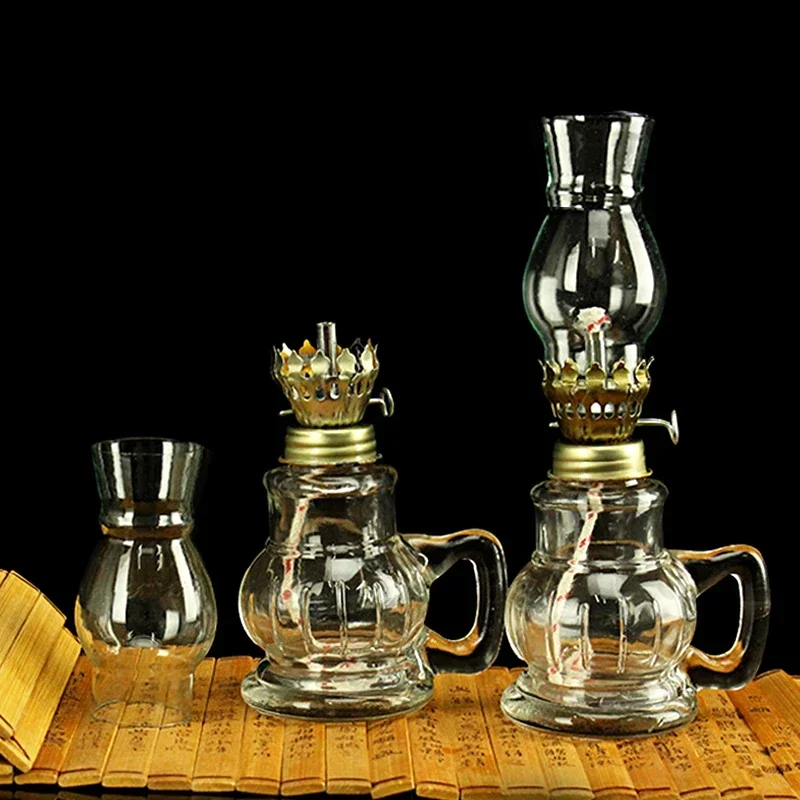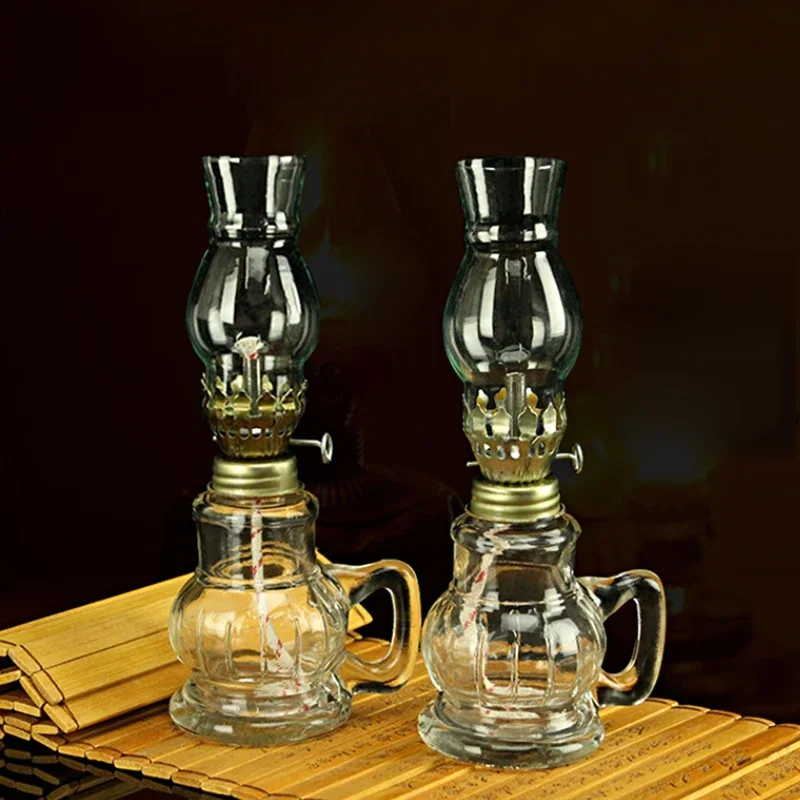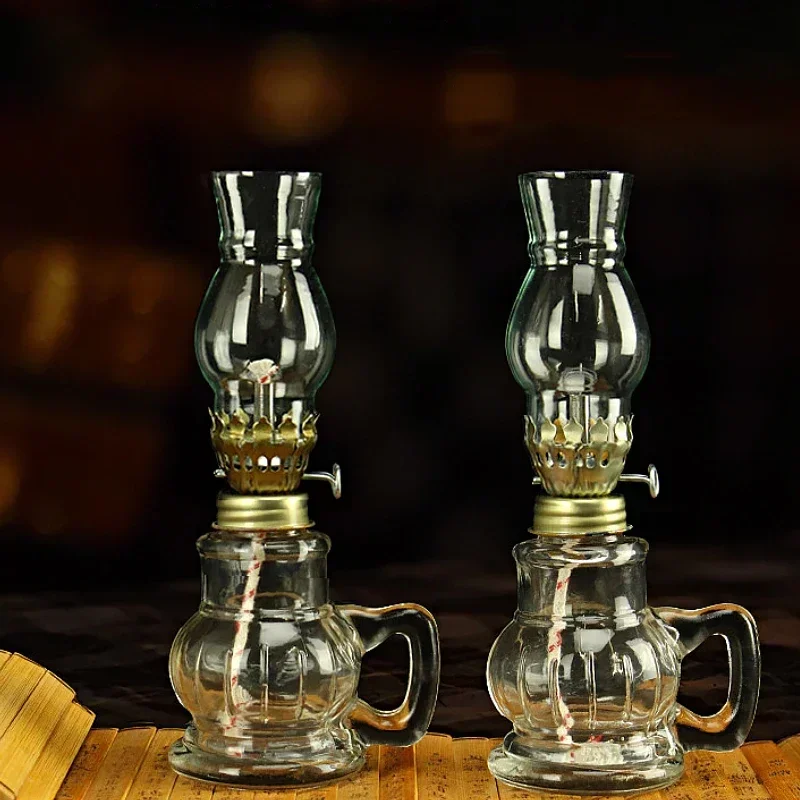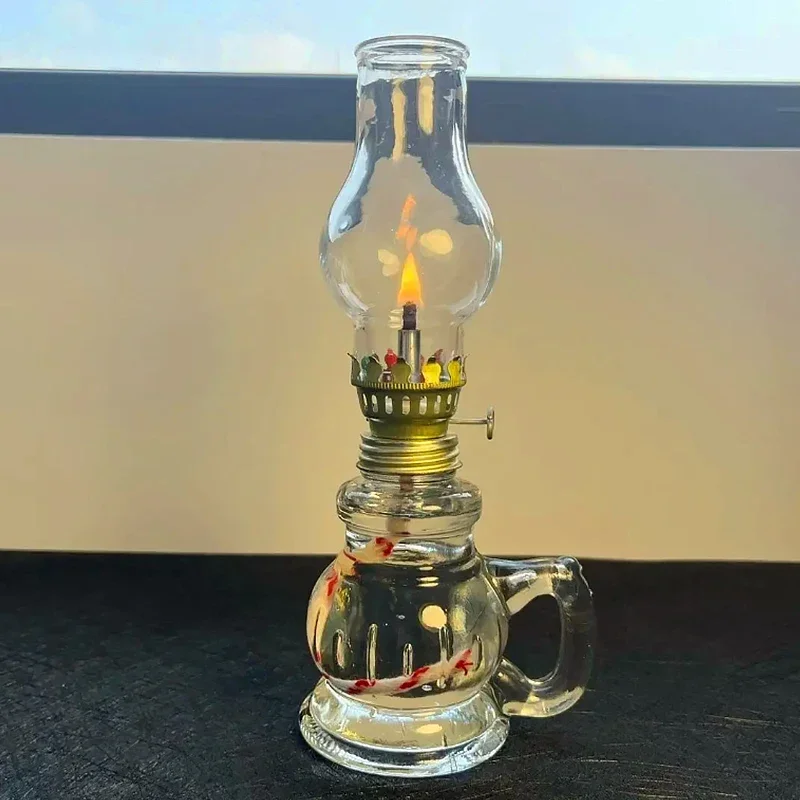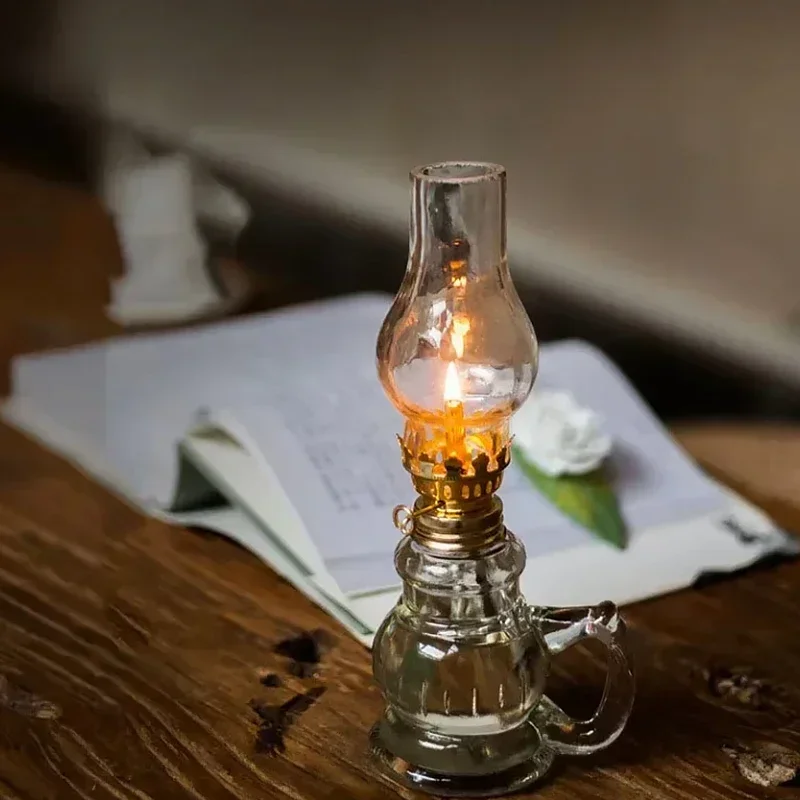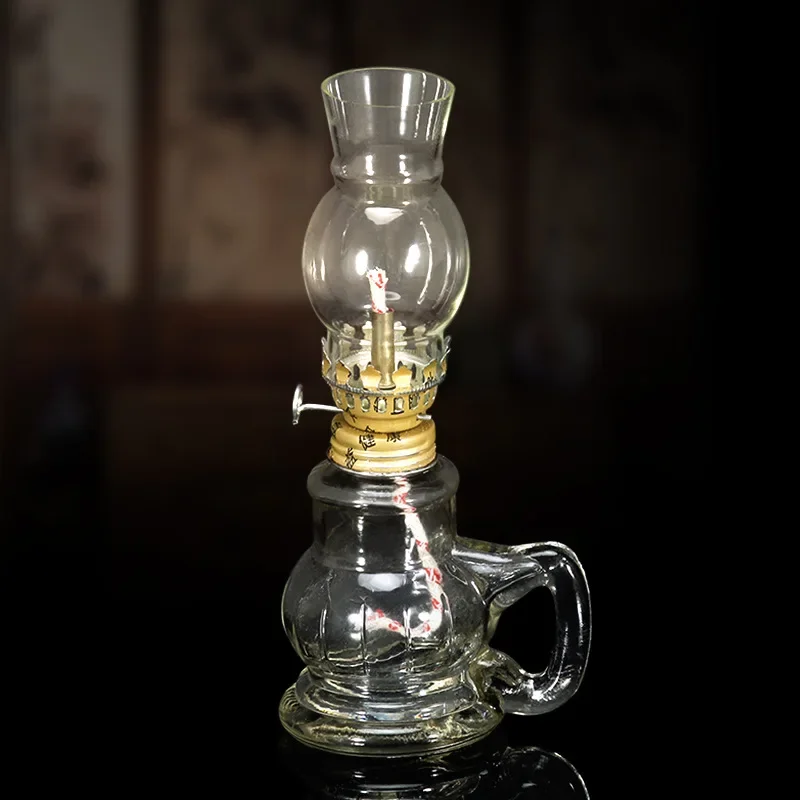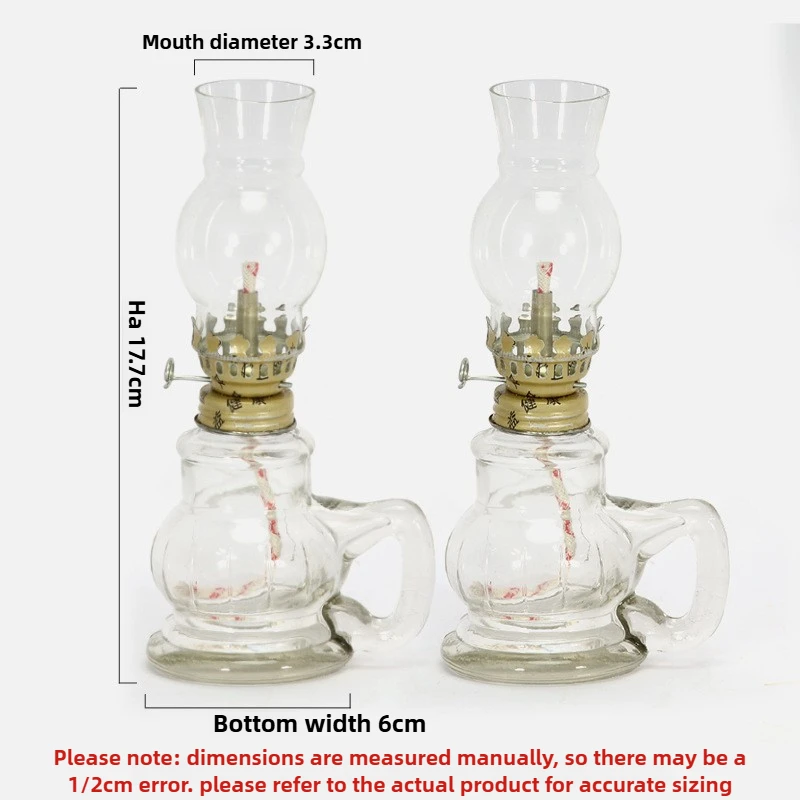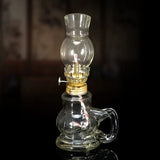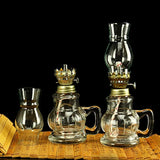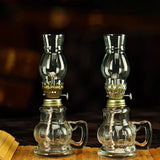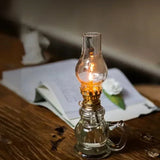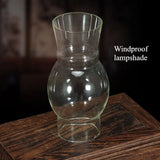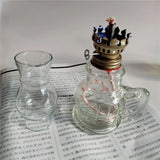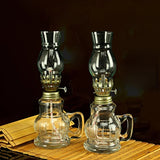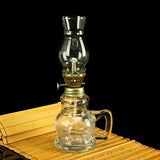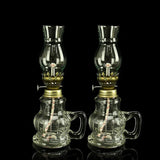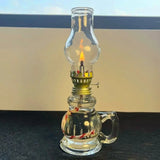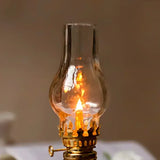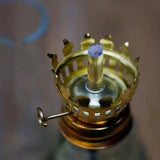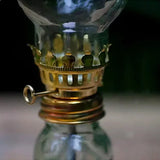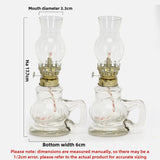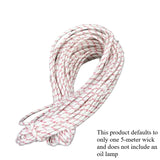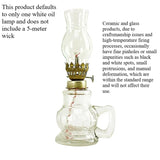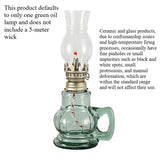SPECIFICATIONS
Brand Name: NoEnName_Null
Candle Included: No
Choice: yes
Feature 1: candle holders
Feature 2: wedding decoration table
Feature 3: gold candle holders
Feature 4: home decor
Feature 5: kerosene lamp
Feature 6: Lamp holder
Handmade: No
Hign-concerned Chemical: None
Matching Candle: Floating Tealight
Material: Glass
Origin: Mainland China
Style: Classic Style
Type: Oil Lamp
Use: Religious Activities
structural principle
Usually, cotton cord wicks are used, the lamp head is made of copper, and the lamp holder and windproof tube are made of glass. There are multiple claws around the lamp head, and there is a small gear next to it that can control the rise or fall of the cotton rope. By adjusting the position of the cotton rope, the flame size can be controlled, thereby adjusting the brightness. Fill the lamp holder with kerosene, and the cotton rope uses capillary action to suck the kerosene onto the rope head, igniting the rope head to illuminate.
Instructions for use
Oil injection operation: Open the top cover of the oil lamp and slowly inject specialized lamp oil into the lamp chamber (it is recommended to use kerosene, specialized vegetable oil, etc., and flammable and explosive liquids such as gasoline and alcohol are prohibited). The amount of oil injected should not exceed 2/3 of the total capacity of the lamp chamber to avoid overflow.
Install the wick: Insert one end of the wick into the oil groove at the bottom of the oil lamp, ensuring that the wick fully contacts the lamp oil; Pull out the lamp socket on the other end and reserve a length of [1-2cm] for ignition.
Ignite and extinguish: Use matches or lighters to ignite the exposed part of the wick, avoiding open flames from contacting the lamp body; When extinguishing, you can gently blow it out or cover the lamp mouth with a lamp cover to isolate the air (it is recommended to use the lamp cover to extinguish it first for safety).
Daily maintenance: After each use, if oil stains are found on the lamp socket, they can be wiped with a clean cotton cloth; When the lamp oil is insufficient, it should be replenished in a timely manner to avoid dry burning of the wick and affect its service life.
Precautions
It is prohibited to use gasoline, alcohol, alcohol spray and other flammable and explosive liquids as fuel to avoid fire; It is recommended to use specialized kerosene or environmentally friendly lamp oil.
When using, place the oil lamp on a stable and heat-resistant surface, away from flammable materials such as curtains, sofas, and paper, and avoid contact with children and pets.
Do not use oil lamps unattended. When sleeping, turn them off completely and confirm that there are no residual sparks.
If the oil lamp is accidentally knocked over, immediately cover it with a damp cloth to extinguish the fire. Do not directly sprinkle water (extinguishing oil fires with water may cause the fire to spread).
If the wick undergoes carbonization, breakage, or other conditions, it should be replaced in a timely manner to avoid insufficient combustion and the production of black smoke or odor.
Usually, cotton cord wicks are used, the lamp head is made of copper, and the lamp holder and windproof tube are made of glass. There are multiple claws around the lamp head, and there is a small gear next to it that can control the rise or fall of the cotton rope. By adjusting the position of the cotton rope, the flame size can be controlled, thereby adjusting the brightness. Fill the lamp holder with kerosene, and the cotton rope uses capillary action to suck the kerosene onto the rope head, igniting the rope head to illuminate.
Instructions for use
Oil injection operation: Open the top cover of the oil lamp and slowly inject specialized lamp oil into the lamp chamber (it is recommended to use kerosene, specialized vegetable oil, etc., and flammable and explosive liquids such as gasoline and alcohol are prohibited). The amount of oil injected should not exceed 2/3 of the total capacity of the lamp chamber to avoid overflow.
Install the wick: Insert one end of the wick into the oil groove at the bottom of the oil lamp, ensuring that the wick fully contacts the lamp oil; Pull out the lamp socket on the other end and reserve a length of [1-2cm] for ignition.
Ignite and extinguish: Use matches or lighters to ignite the exposed part of the wick, avoiding open flames from contacting the lamp body; When extinguishing, you can gently blow it out or cover the lamp mouth with a lamp cover to isolate the air (it is recommended to use the lamp cover to extinguish it first for safety).
Daily maintenance: After each use, if oil stains are found on the lamp socket, they can be wiped with a clean cotton cloth; When the lamp oil is insufficient, it should be replenished in a timely manner to avoid dry burning of the wick and affect its service life.
Precautions
It is prohibited to use gasoline, alcohol, alcohol spray and other flammable and explosive liquids as fuel to avoid fire; It is recommended to use specialized kerosene or environmentally friendly lamp oil.
When using, place the oil lamp on a stable and heat-resistant surface, away from flammable materials such as curtains, sofas, and paper, and avoid contact with children and pets.
Do not use oil lamps unattended. When sleeping, turn them off completely and confirm that there are no residual sparks.
If the oil lamp is accidentally knocked over, immediately cover it with a damp cloth to extinguish the fire. Do not directly sprinkle water (extinguishing oil fires with water may cause the fire to spread).
If the wick undergoes carbonization, breakage, or other conditions, it should be replaced in a timely manner to avoid insufficient combustion and the production of black smoke or odor.
